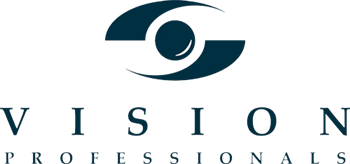Eye Exams For the Whole Family
Everyone needs routine eye exams!
Comprehensive and Pediatric Eye Exams at Vision Professionals
At Vision Professionals, we believe that everyone deserves the best in eye care. We offer comprehensive eye exams that go beyond the basics to ensure that your vision and overall eye health are thoroughly assessed. Whether you’re coming in for a routine checkup or need to address specific concerns, our expert optometrists use the latest technology to evaluate every aspect of your eye health.
What Does a Comprehensive Eye Exam Include?
Our comprehensive eye exam is a detailed process that assesses your vision and checks for early signs of eye conditions such as glaucoma, cataracts, or retinal diseases. Using state-of-the-art diagnostic tools, we are able to detect issues early, preventing future complications and helping you maintain clear vision for years to come.
We’ll also take the time to discuss any symptoms you may be experiencing and answer all your questions, ensuring that you fully understand your eye health and treatment options.
Pediatric Eye Care: Nurturing Your Child’s Vision
Good vision is critical for a child’s development, and an early eye exam is key to ensuring they have the best foundation for learning and play. At Vision Professionals, we offer specialized pediatric eye exams tailored to children’s needs. Our experienced team is skilled at making the experience fun and stress-free, helping your child feel comfortable and relaxed.
From identifying common childhood vision problems like nearsightedness and lazy eye (amblyopia) to addressing more serious conditions, we are here to provide top-notch care for your child’s eyes. Early detection can significantly improve outcomes, ensuring that your child can excel at school and sports.
Why Choose Vision Professionals?
At Vision Professionals, we’re committed to providing personalized care in a welcoming environment. With multiple convenient locations in Columbus and the surrounding areas, we’re proud to be the go-to choice for individuals and families seeking comprehensive eye care. Our compassionate team is here to support you every step of the way, from your first visit to follow-up care.
Make an appointment today and take the first step toward healthier eyes and better vision!
Our Eye Exam FAQs
Common Testing We Do at Vision Professionals
![Comprehensive Eye Exams Services Callout 1 in [tokens name=City],[tokens name=State].](https://da4e1j5r7gw87.cloudfront.net/wp-content/uploads/sites/4580/2023/08/Services-Callout-1.jpg)
Visual Field Test
A visual field test measures your peripheral (side) vision to detect blind spots or vision loss, which can indicate conditions like glaucoma, optic nerve damage, or neurological disorders. The test involves focusing on a central point while responding to lights or objects appearing in different areas of your vision.
![Comprehensive Eye Exams Services Callout 2 in [tokens name=City],[tokens name=State].](https://da4e1j5r7gw87.cloudfront.net/wp-content/uploads/sites/4580/2023/08/Services-Callout-2.jpg)
Refraction Exam
A refraction exam determines your precise eyeglass or contact lens prescription by measuring how light bends as it passes through your eye. Your optometrist will have you look through different lenses and compare their clarity, helping to correct nearsightedness, farsightedness, astigmatism, or presbyopia.
![Comprehensive Eye Exams Services Callout 3 in [tokens name=City],[tokens name=State].](https://da4e1j5r7gw87.cloudfront.net/wp-content/uploads/sites/4580/2023/08/Services-Callout-3.jpg)
Binocular Vision Assessment
This test evaluates how well your eyes work together to create a single, clear image. It checks for conditions like eye misalignment, depth perception issues, or eye strain, which can cause headaches, difficulty focusing, or double vision. Binocular vision problems can impact reading, driving, and overall visual comfort.
